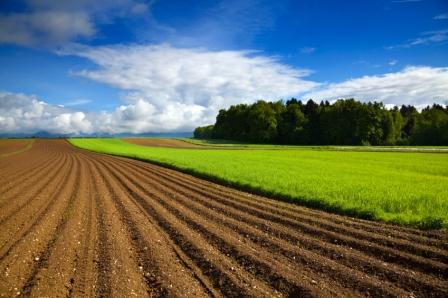The EU starch industry’s position on the next Common Agriculture Policy (2021-2027)
October 2018
An introduction to the European starch industry
The EU starch industry manufactures over six hundred products including native starches, modified starches, liquid and solid sweeteners as well as oils, proteins and fibres that are used as ingredients and functional supplements in a vast array of food, feed and industrial applications.
In 2017, from 75 starch production facilities in 20 of the 28 EU Member States, the European starch industry processed about 24 million tonnes of agricultural raw materials, roughly split between wheat (9 million tonnes), maize (8 million tonnes), and starch potatoes (7 million tonnes) transformed into 11 million tonnes of starch and 5 million tonnes of proteins, fibres and oils.
To valorise all the components of the raw materials, the EU starch industry processes every part of the grain or the tuber and produces minimal waste; more than 99% is valorised[1].
The EU consumes 9,4 million tonnes of starch and starch derivatives, of which 58% in food, 2% in feed and 40% in industrial applications, split into 27% native starches, 19% modified starches and 54% starch sweeteners.
With a turnover of 7.4 billion Euros, it also invested about 429 million Euros, of which over 78 million Euros in Research & Development. EU starch plants are often located in ruralareas in which they are one of the major, if not the biggest, employer in the region.
The CAP – a key policy enabling the EU starch industry’s supply of agricultural raw materials of good quality, in sufficient quantities, at a competitive price
For the European starch industry, the number one priority is to have access to agricultural raw materials of good quality, in sufficient quantities, at a competitive price. To that end, we believe that the EU policy must provide :
1.A sufficient budget in line with the political ambitions:
- In support of the joint French-German declarationon the CAP, Starch Europe rejects the proposed decreases in CAP budget, and recommends that the budgets for both pillars are maintained at their current levels.
- In particular, we support a strong 1stpillar with at least an equivalent budget that secures the production of various raw materials and the viability of rural areas. This will provide stability of farmers’ income and secure the supply of EU-grown raw materials to the industry.
2.Strengthened risk management tools to help farmers manage price fluctuations and modernise farm holdings across the board:
- The integration of EU agriculture in a global market exposes it to world market price fluctuations. Other factors will continue to impact the production and income of farmers: changes in consumer habits and climatic events (e.g. 2018 drought) that are likely to occur more frequently in future.
- EU farmers and other stakeholders in the supply chain can already manage their risk profile against price fluctuations thanks to well-functioning futures markets for cereals, such as the MATIFF.
3.EU R&D funding to help farmers meet sustainability challenges, such as the reduction in pesticide use:
- For instance, the EU potato starch industry has built its sustainability on the special relationship it entertains with its 15,000 starch potato famers. Security of revenue and of supply across the value chain are sustained by the fact that more than 95% of the starch potato production in Europe is contractualised.
- The majority of the starch potato sector is run by cooperatives, which have the growers as members. While cooperatives can pool together resources and organise the commercialisation of their outputs, but EU R&D funding remains key to address sustainability challenges.
Starch Europe supports the market-orientation and sustainability of the CAP
4a. Because the EU starch industry sources its raw materials almost exclusively on the EU market, greater market-orientation contributes to secure the availability and quality of raw materials on the EU market as well as to the industry’s competitiveness.
- With greater market-orientation comes more requests for transparency: Starch Europe constructively contributes to the Commission’s Market Observatory on sugar and isoglucose, as well as the Market Observatory on crops.
- With regard to direct payments, Starch Europe believes that capping should not hamper the competitiveness and modernisation of large farm holdings, which contribute to supplying qualitative raw materials in sufficient quantities. While the voluntary nature of capping can be regionally sound, Starch Europe is opposed to capping becoming mandatory across-the-board.
4b. The greater emphasis on the environmental pillar of the CAP should enable EU farmers to promote the sustainability of their CAP-compliant raw materials as a competitive edge on the world market.
- The new green architecture of the CAP now combines new enhanced conditionality rules together with eco-schemes under Pillar I and climate and environmental measures in Pillar II.
- EU farmers must comply with some of the strictest rules in the world. This set of rules provides the users of EU-grown biomass with guarantees in sustainability across climate change, water, soil, biodiversity and landscape.
Starch Europe notes the inclusion of the Coupled Income Support (CIS) in the CAP Strategic plans and calls on the Commission to ensure fair competition across the EU
Since the 2013 reform of the CAP, five out of ten producing Member States recouple direct payments to the growing of starch potatoes in the EU. Voluntary coupled support for starch potato can be a suitable measure in some Member States, provided that it does not distort competition between economic players.
5a. Starch Europe believes it is of utmost importance that – in cases where such coupled support is granted – the applicable conditions are closely scrutinized by the Commission as part of their approval of the Member States’ CAP Strategic Plans, to ensure fair competition across Europe between starch potato farmers, and between the factories they supply their potatoes to.
Starch Europe believes that increased subsidiarity will lead to distortions of competition between farmers and industries across the Member States and threatens the functioning of the Single Market
5b. The new delivery model and increased subsidiarity allows Member States to make policy choices based on their priorities and targets, creating uncertainties about the implementation of the provisions governing the next CAP, reducing coherence and transparency and adding complexity with the potential of creating significant divergences across Member States.
Starch Europe supports the Commission’s proposal onHorizon Europe to dedicate 10 billion euros to food, agriculture, rural development and the bioeconomy under the ‘food and natural resources’ cluster
In addition to its uses in many food products, starch has multiple industrialapplications. Ranging from hydrolysed wheat starch found in shampoos to dextrose found in pharmaceutical applications, the EU starch industry continuously innovates to meet changing customer and consumer needs for new applications, developing the functionalities of the starch products and replacing fossil-based ingredients with renewable and biodegradable starch-based ones.
Bio-based products as alternatives to fossil-fuel counterparts are key to developing a sustainable economy based on renewable materials in Europe.
The role of research in food is equally crucial: Starch Europe supports the greater food orientation of Horizon Europe and calls on the Commission to support the industrial development of a sustainable and competitive supply chain for all plant-based proteins in the EU [2].
6.For all these reasons, Starch Europe opposes any cut to the budget of this ‘food and natural resources’ cluster. EU R&D support is crucial to realising the potential of the bioeconomy in the EU: it promotes research and innovation at the farm and industry levels, making the European bioeconomy more competitive and sustainable in the EU and on the world market.
Summary of Starch Europe’s recommendations and concerns:
1.A sufficient budget in line with the political ambitions
2. Strengthened risk management tools to help farmers manage price fluctuations and modernise farm holdings across the board
3. EU R&D funding to help farmers meet sustainability challenges, including the reduction in pesticide use
4. Greater market-orientation and sustainability of the new CAP enable :
- the EU starch industry to secure the availability and quality of EU-grown raw materials, thereby strengthening the industry’s competitiveness
- EU farmers to promote the sustainability of their CAP-compliant raw materials as a competitive edge on the world market, thanks to the greater emphasis on the environmental pillar of sustainability
5. Fair competition between farmers and industries across the Member States -particularly with the inclusion of Coupled Income Support (CIS) in the CAP Strategic plans - and preservation of the integrity of the single market
6. Support to the Commission’s proposal on Horizon Europe to dedicate 10 billion euros to food, agriculture, rural development and the bioeconomy under the ‘food and natural resources’ cluster.
Download the PDF version of this Position Paper here
***
[1]Starch Europe Life Cycle Assessment
[2]See Starch Europe’s position paper on the EU protein plan: https://starch.eu/blog/2018/10/24/proteins-as-part-of-the-european-starch-industrys-value-chain/

